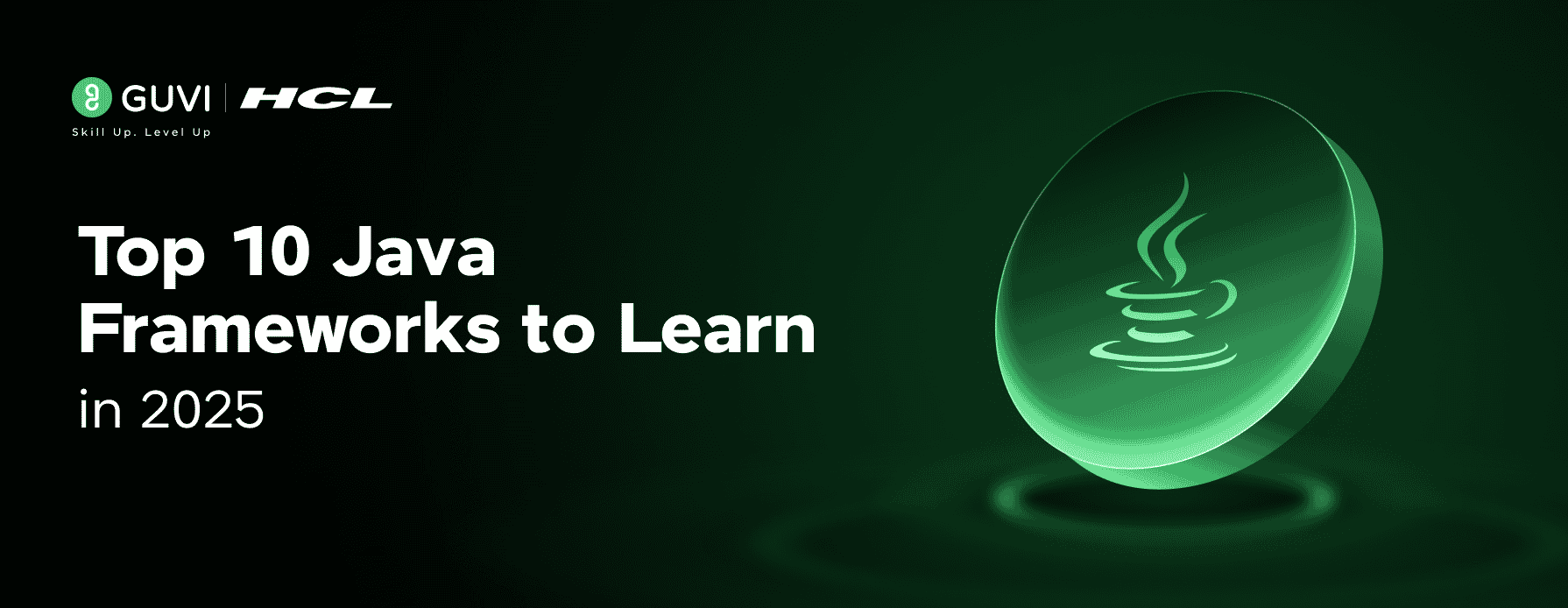
Java has been around for over two decades, and it’s still going strong in 2025. Why? Because it constantly evolves with new tools and frameworks that help developers build faster, safer, and smarter applications.
If you’re a Java developer or planning to start your journey in software development, it’s important to know the right frameworks. Think of a framework like a ready-made toolkit — it saves you from writing repetitive code and helps you focus on the main logic of your app.
In this blog, we’ll walk you through the Top 10 Java Frameworks to learn in 2025, along with simple examples, use-cases, and why they matter.
Table of contents
- The Top 10 Java Frameworks You Must Learn in 2025
- Spring Boot – The Foundation of Modern Java Development
- Jakarta EE – Enterprise-Grade Framework for Big Systems
- 3. Quarkus – Fast, Lightweight, and Cloud-Native
- Micronaut – Tiny but Powerful
- Vert.x – Event-Driven & Reactive Programming
- Hibernate – The Best ORM for Java
- JHipster – Full-Stack Application Generator
- Dropwizard – Simple and Reliable
- Play Framework – Reactive Web Framework
- GraalVM (Native Image & Polyglot Power)
- Concluding Thoughts…
The Top 10 Java Frameworks You Must Learn in 2025
With dozens of Java frameworks out there, it’s easy to get overwhelmed. That’s why we’ve handpicked the 10 most relevant, high-impact frameworks you should focus on in 2025—whether you’re into backend, microservices, cloud-native apps, or full-stack development.
1. Spring Boot – The Foundation of Modern Java Development
Spring Boot is the most popular Java framework used to build web applications and REST APIs quickly. It’s part of the larger Spring ecosystem.
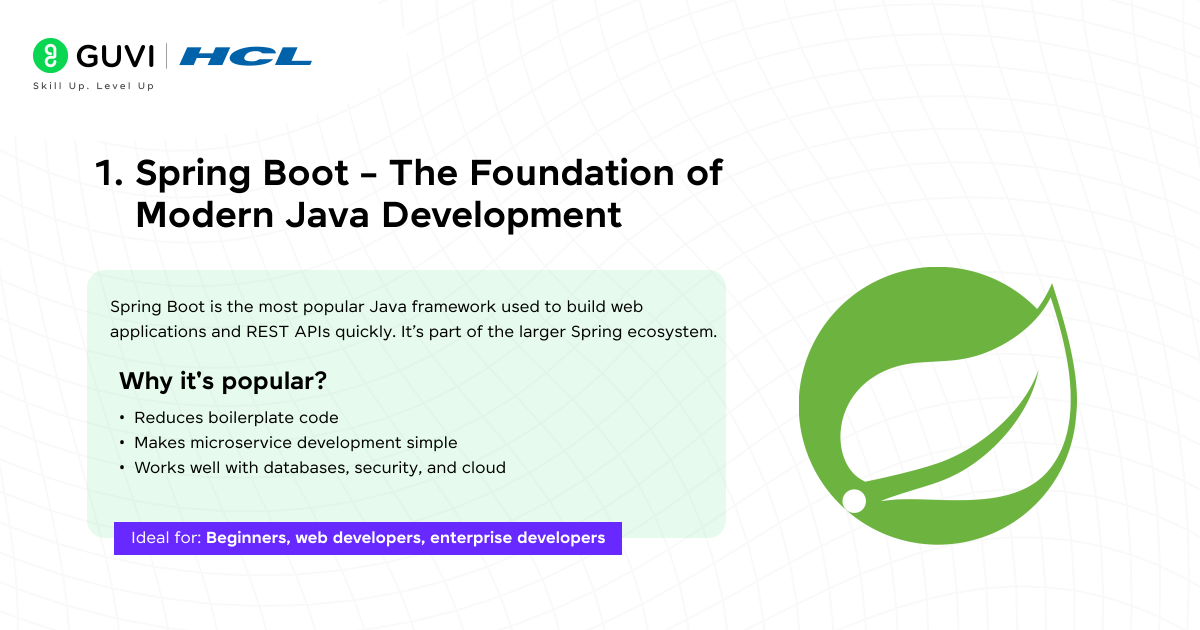
Why it’s popular:
- Reduces boilerplate code
- Makes microservice development simple
- Works well with databases, security, and cloud
Real-world Example: You’re building a food delivery app backend — Spring Boot helps you set up login, menus, orders, payments, etc., in no time.
Ideal for: Beginners, web developers, enterprise developers
2. Jakarta EE – Enterprise-Grade Framework for Big Systems
Formerly known as Java EE, Jakarta EE is used to build large-scale, secure, and robust applications, especially in banks, government, and corporate sectors.

Why it’s important in 2025:
- Backed by the Eclipse Foundation
- Modernized with cloud features
- Ideal for mission-critical enterprise apps
Real-world Example: An airline reservation system used by thousands of people every minute — Jakarta EE handles such heavy-duty tasks reliably.
Ideal for: Enterprise developers, job seekers in big tech & public sector
3. Quarkus – Fast, Lightweight, and Cloud-Native
Quarkus is a next-gen Java framework built for fast startup, low memory usage, and seamless cloud deployment.
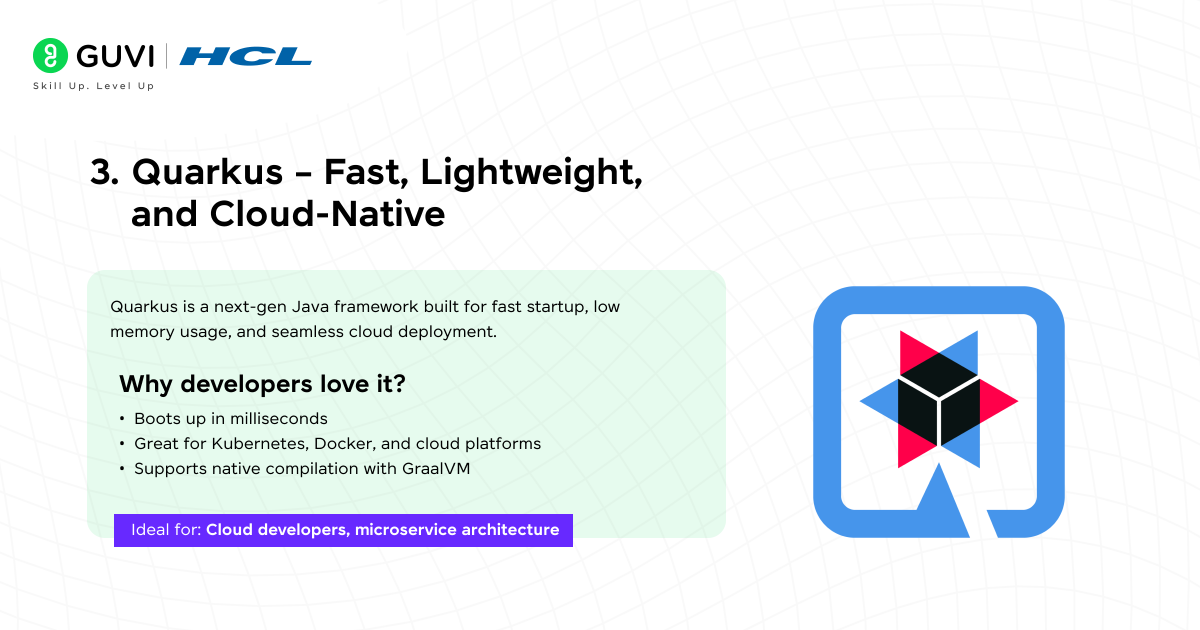
Why developers love it:
- Boots up in milliseconds
- Great for Kubernetes, Docker, and cloud platforms
- Supports native compilation with GraalVM
Real-world Example: You’re creating a real-time stock trading app — Quarkus ensures it loads instantly and performs efficiently on the cloud.
Ideal for: Cloud developers, microservice architecture
4. Micronaut – Tiny but Powerful
Micronaut is a modern Java framework designed to build modular microservices with high performance and fast startup.
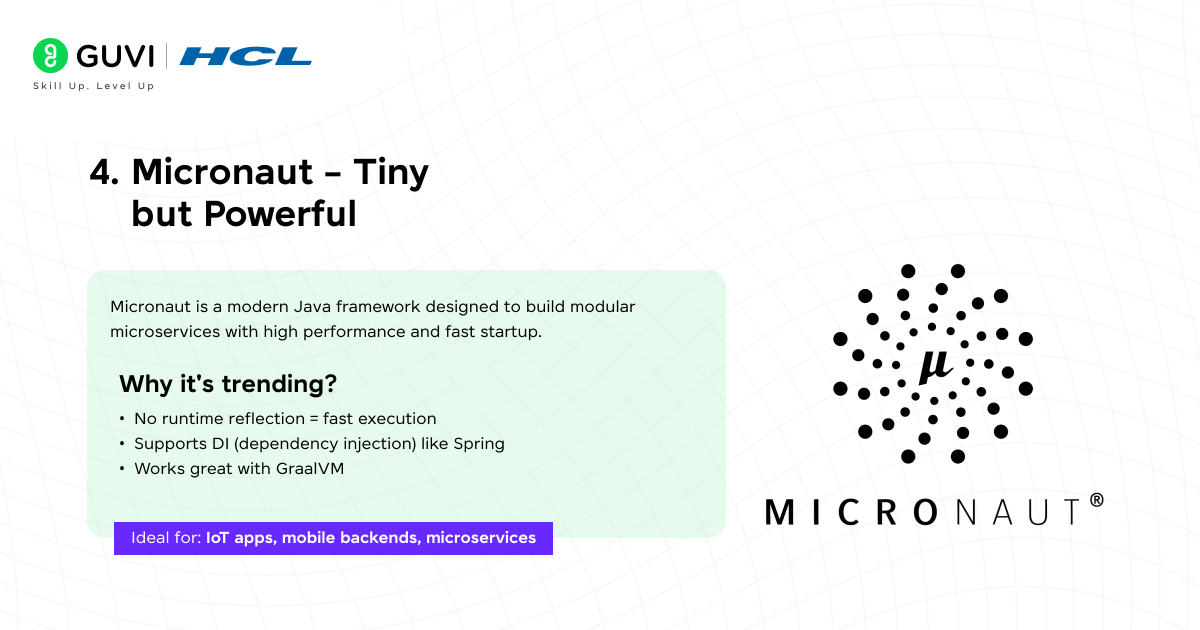
Why it’s trending:
- No runtime reflection = fast execution
- Supports DI (dependency injection) like Spring
- Works great with GraalVM
Real-world Example: Building a weather app API that provides data to mobile devices in a flash? Micronaut is a smart choice.
Ideal for: IoT apps, mobile backends, microservices
5. Vert.x – Event-Driven & Reactive Programming
Vert.x is a toolkit that helps build reactive applications that handle thousands of requests at the same time.
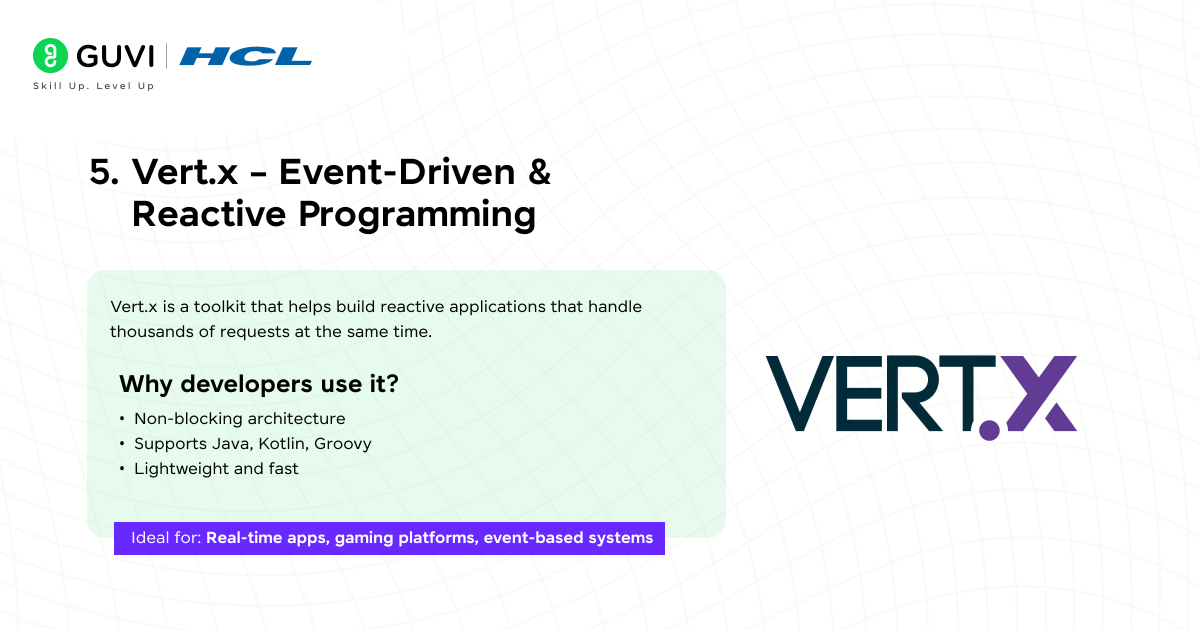
Why developers use it:
- Non-blocking architecture
- Supports Java, Kotlin, Groovy
- Lightweight and fast
Real-world Example: Creating a chat application like WhatsApp? Vert.x allows you to manage real-time messages for millions of users.
Ideal for: Real-time apps, gaming platforms, event-based systems
6. Hibernate – The Best ORM for Java
Hibernate simplifies database operations by converting Java objects into database tables and vice versa.

Why it’s still essential:
- No need to write complex SQL queries
- Integrates well with Spring and Jakarta EE
- Handles caching and relationships smartly
Real-world Example: You want to store student data, orders, or employee records in MySQL — Hibernate helps manage it all easily.
Ideal for: Backend developers, database-heavy applications
7. JHipster – Full-Stack Application Generator
JHipster combines Spring Boot (for backend) with Angular, React, or Vue (for frontend) to generate ready-to-use full-stack apps.
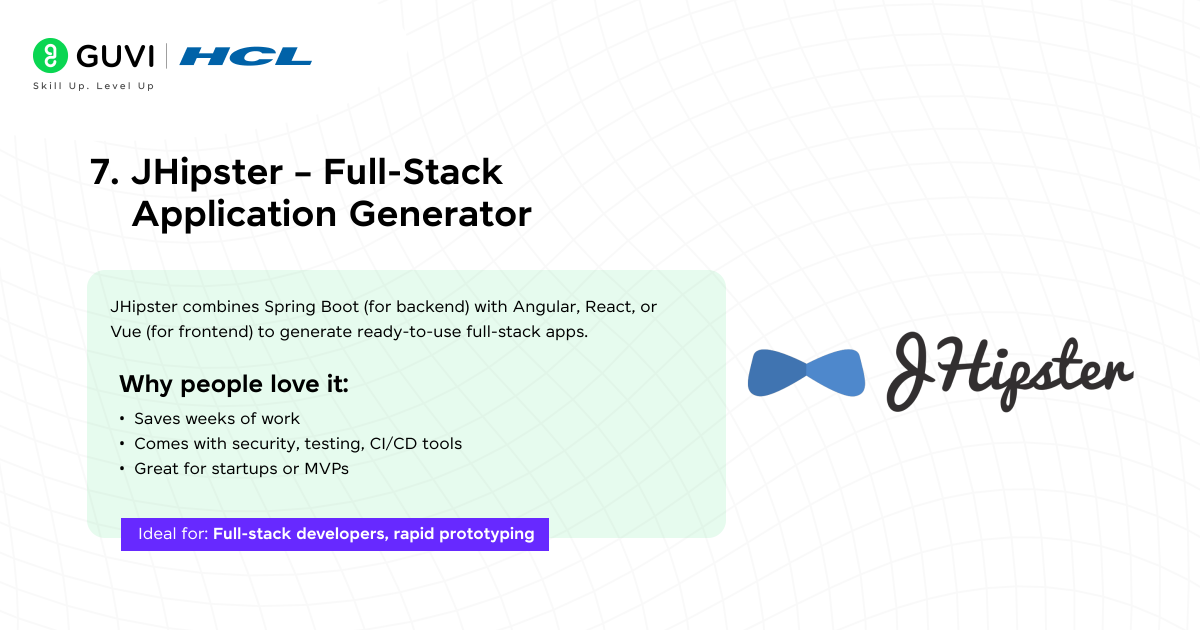
Why people love it:
- Saves weeks of work
- Comes with security, testing, CI/CD tools
- Great for startups or MVPs
Real-world Example: Want to build an e-commerce website quickly with cart, user login, and admin panel? JHipster does all the setup for you.
Ideal for: Full-stack developers, rapid prototyping
8. Dropwizard – Simple and Reliable
Dropwizard combines stable libraries like Jetty, Jersey, and Jackson into a lightweight framework for REST APIs.
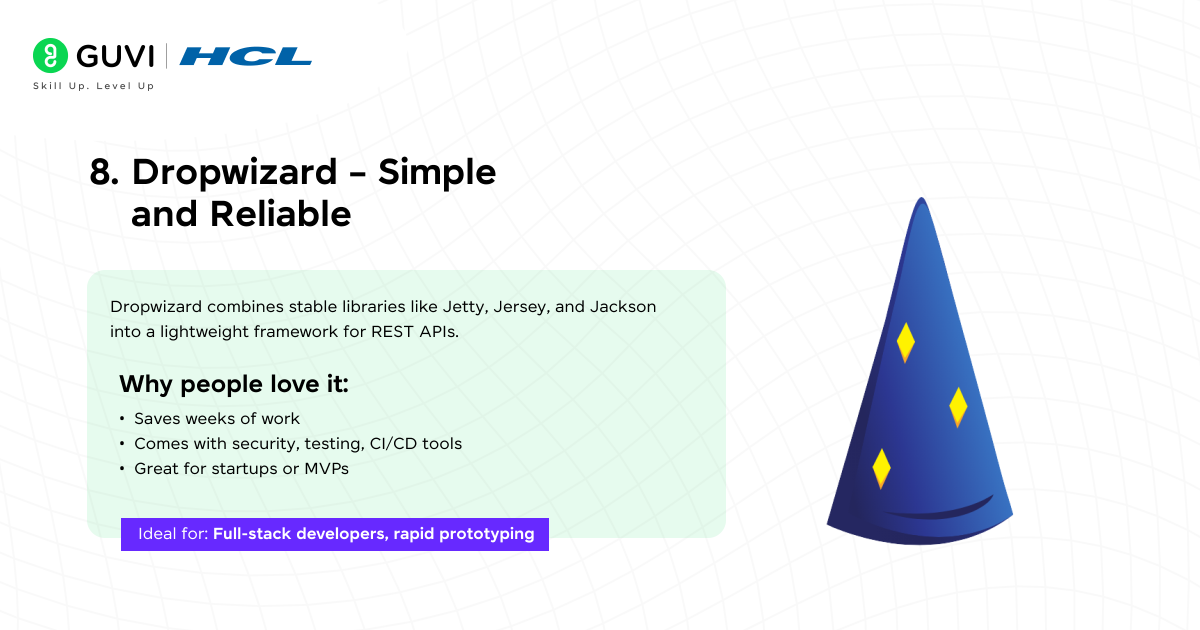
Why choose it:
- Minimal setup
- Ideal for small services
- Fast and production-ready
Real-world Example: Need to create a small weather API that gives real-time data to other apps? Dropwizard is a simple, fast solution.
Ideal for: Microservices, REST API developers
9. Play Framework – Reactive Web Framework
Play is a high-performance framework that uses asynchronous programming and supports Java and Scala.
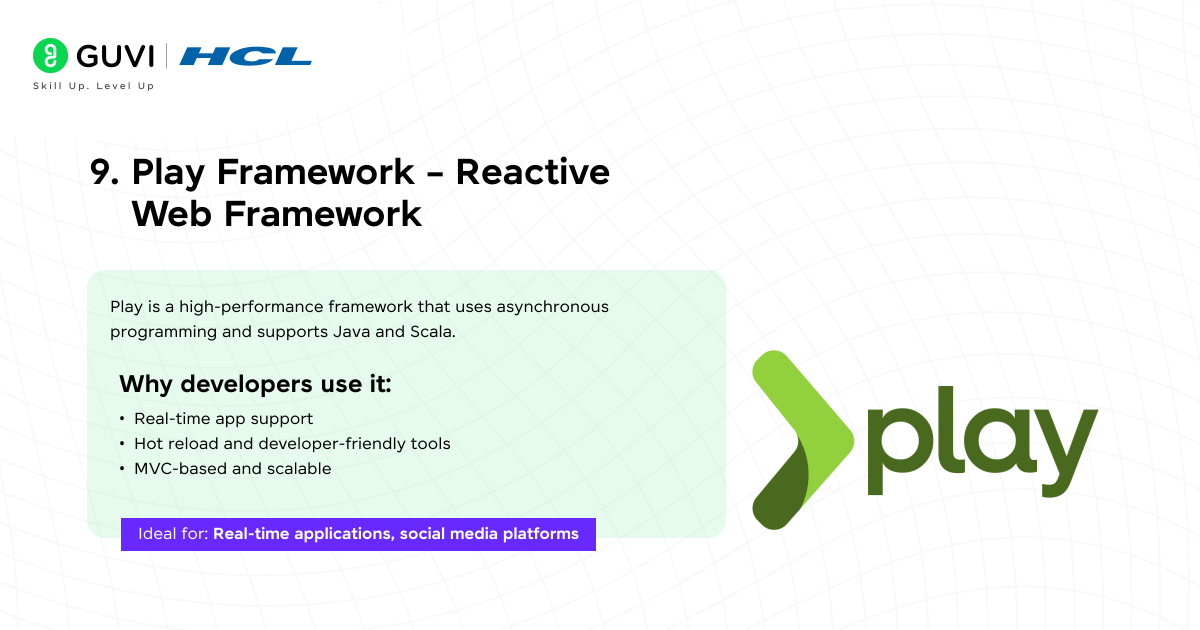
Why developers use it:
- Real-time app support
- Hot reload and developer-friendly tools
- MVC-based and scalable
Real-world Example: Creating a music streaming platform like Spotify? Play ensures smooth performance even with thousands of users online.
Ideal for: Real-time applications, social media platforms
10. GraalVM (Native Image & Polyglot Power)
GraalVM is not a framework, but a powerful virtual machine that improves how Java apps run by compiling them into native code.
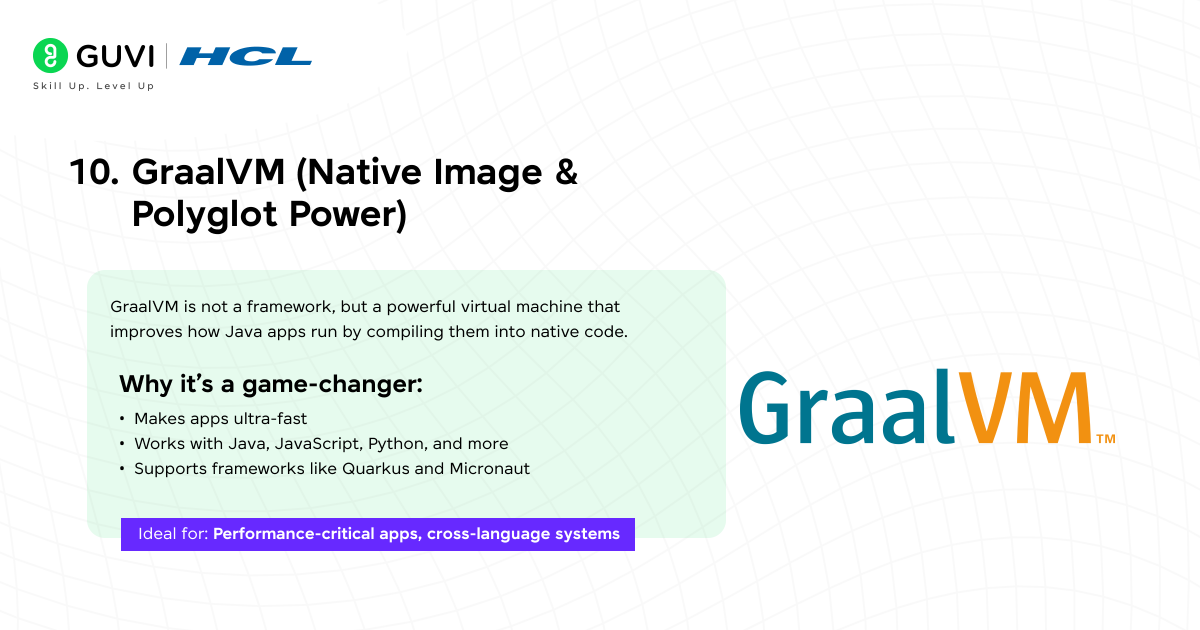
Why it’s a game-changer:
- Makes apps ultra-fast
- Works with Java, JavaScript, Python, and more
- Supports frameworks like Quarkus and Micronaut
Real-world Example: You’re developing a finance app for mobile that needs to run fast and consume less battery — GraalVM makes it possible.
Ideal for: Performance-critical apps, cross-language systems
Looking to master Java and become a job-ready full stack developer? GUVI’s IIT-M Certified Java Full Stack Development Course offers hands-on training in core Java, Spring Boot, MongoDB, and more—perfect for building real-world applications with industry support and placement guidance.
Concluding Thoughts…
Java remains one of the most powerful and adaptable programming languages in 2025, and the right framework can significantly shape your development journey. And these frameworks make your job as a developer so easy that you’ll regret not learning to use them.
Choosing the right Java framework isn’t just about what’s trending — it’s about aligning with your project goals, career path, and preferred development style. So start experimenting, build real-world projects, and let these frameworks unlock your full potential as a modern Java developer. Good Luck!








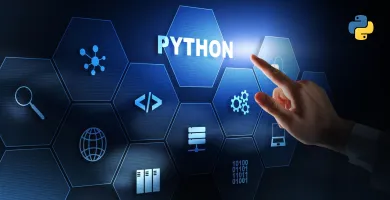













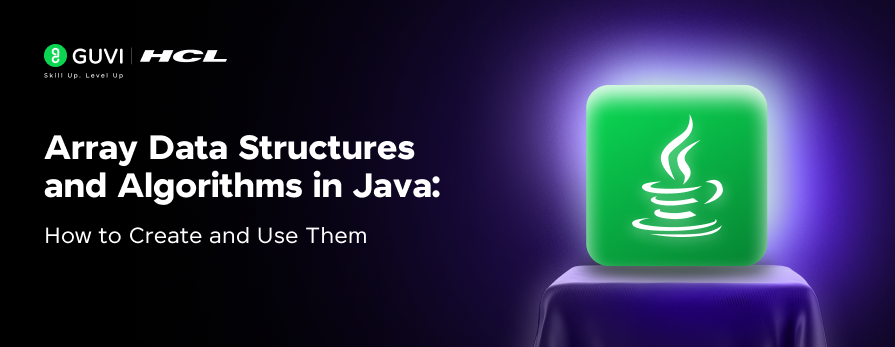

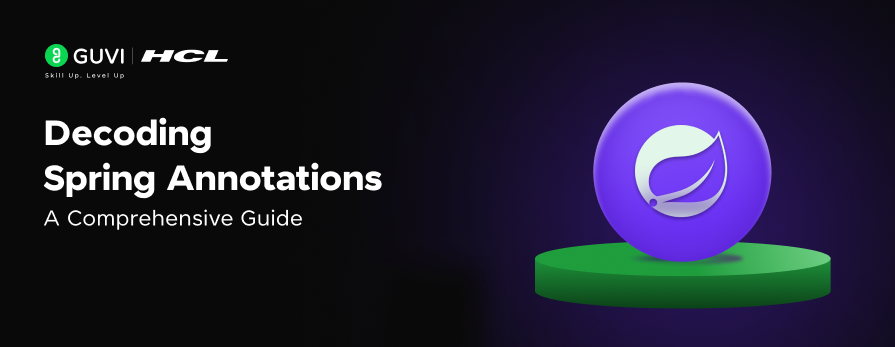
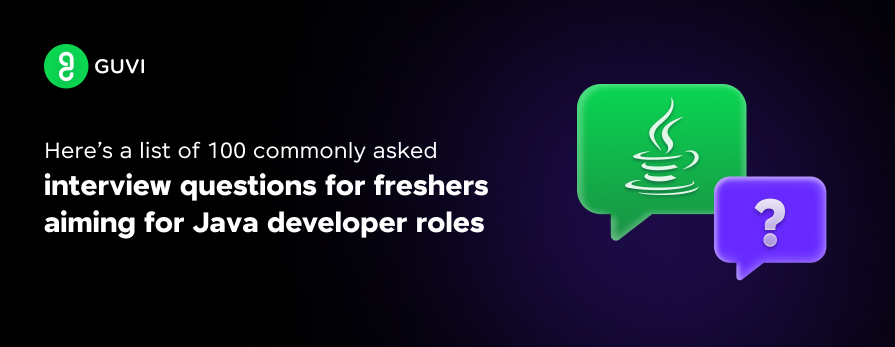
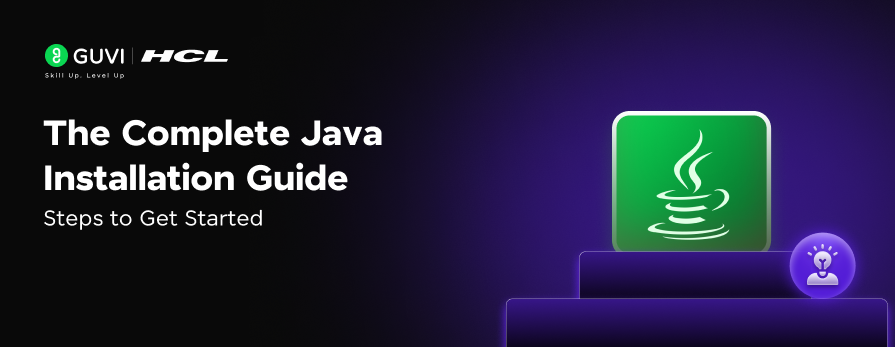
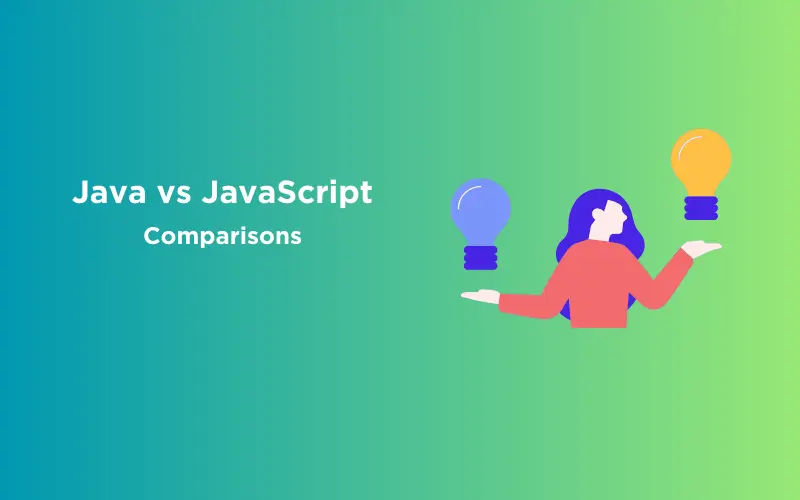






Did you enjoy this article?